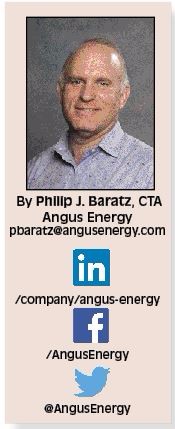Written on: September 24, 2015 by Phillip J. Baratz
 At this years’ Eastern Energy Expo (EEE) at Foxwoods Resort Casino in Mashantucket, CT, I gave a presentation to a large room full of oil dealers who are starting to realize that the “information is power” saying is not simply an advertising slogan for computer companies, but more and more the most important differentiator between companies in every industry. The feedback from the presentation led me to realize that the follow up email to the show’s attendees is just as appropriate for the loyal readers of ICM. So, here it goes:
At this years’ Eastern Energy Expo (EEE) at Foxwoods Resort Casino in Mashantucket, CT, I gave a presentation to a large room full of oil dealers who are starting to realize that the “information is power” saying is not simply an advertising slogan for computer companies, but more and more the most important differentiator between companies in every industry. The feedback from the presentation led me to realize that the follow up email to the show’s attendees is just as appropriate for the loyal readers of ICM. So, here it goes:
Fortune Teller Follow Up
The EEE at Foxwoods in May definitely felt a little strange. I can’t explain why, but I sort of missed the shag carpets and grey “skyline” of Atlantic City. However, the skyline of mile after mile of trees at Foxwoods got me over my pining for the Jersey Shore.
Thanks to those who attended the presentation on Predictive Analytics that I gave at the Expo, and for all of the follow up afterwards. The hour-long presentation covered a lot of basics, and I wanted to share with you some of my post-presentation thoughts, prompted by comments and questions that were asked and emailed to me afterwards.
Top five takeaways:
Data’s impact on the way companies must learn to run their businesses does not exclude our industry.
Since all customers are not the same, they shouldn’t all be treated the same way.
Just about all of the information/data that you need in order to better understand your customers’ value to you already exists in your office, and should be (fairly) readily available.
Taking small bites—basic segmentation—is easy to do and can yield immediate results. Starting slowly is okay, as long as you start.
With changes in customer demographics and behavior, if you get left behind now, you may not be afforded an opportunity to catch up.
Top five questions asked, based upon the data that we have worked with:
Can I get info from my back office software (BOS)? In most cases, the answer is yes. However, older/dated systems may have extraction limitations. If that is the case (and we do not work for any of the BOS companies), we strongly suggest upgrading to a more appropriate version.
Why have we taken this long as an industry to adopt new technology? I don’t have an answer that is specific to our industry, as opposed to any other fragmented industry, dominated by multi-generational owners. We take our time because we are not being forced to do anything else. That is changing and in order to compete, you need to move forward.
My new customers don’t seem to stay around as long as the new customers that I used to get. Am I alone? From the analysis that we have done, you are most certainly not alone. Customers want more, they want to pay less, they want a better “experience,” they want to use technology, they want apps, they…. New customers seem to stay for about two years fewer than they used to stay. You need to flip around the question and ask “what am I doing to keep a customer from leaving?”
What makes customers the stickiest? Service contracts, price caps and budget plans seem to always differentiate customer segments. Longer tenured customers have a higher tolerance for “the occasional problem” and lower credit score customers (at least those who pay) have a harder time shopping and are more likely to stay.
What is one thing not to do? If you focus your customer acquisition plan only on a low-ball price and bring in customers who are not on a budget, do not have a service contract and do not have a pricing plan, you are most likely renting those customers—and they will go to another landlord after about two or three years.
We really enjoyed putting on the presentation and we hope that, if you were there, you learned something. If you were not there and would like a copy of the presentation slides, or anything else relating to the notion of the Predictive Analytics impact on our industry, please contact us directly.
Enjoy the summer and let’s all hope that next winter makes us forget this past one very quickly! ICM